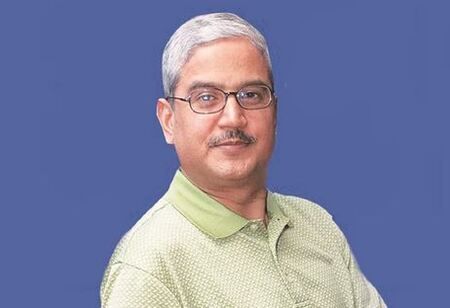
IndiGo's Co-Founder Rakesh Gangwal Sells Share Valued at $1.36 Billion


In a block sale valued at around $1.36 billion, Rakesh Gangwal, a co-founder of Indian airline IndiGo, sold a 5.7 percent share in the low-cost carrier.
According to the term sheet, the shares were sold for 5,230.5 rupees ($61.35) each, which was 3.5 percent less than the company's closing price early this week.
According to BSE records, as of 30 March 2025, Gangwal owned 5.3 percent of the company, while the Chinkerpoo Family Trust owned 8.23 percent.
The trust controlled 15.64 percent of IndiGo as of November 2015, while Gangwal owned 16.89 percent, demonstrating the substantial decline in their total shares over time.
Over the past year, IndiGo's stock has increased by almost 18 percent.
This week, it closed 1.76 percent lower at Rs.5,420 per share on the BSE.
After reaching a deal with co-founder Rahul Bhatia, Gangwal has been progressively lowering his ownership of the airline. After dumping an identical holding on April 11, 2024, he sold a 5.83 percent stake on August 29, 2024.
Due to a rise in air travel during the Mahakumbh festival in January and February, IndiGo recorded a 62 percent increase in earnings in the fourth quarter that concluded in March.
The business stated during its most recent earnings call that it had damp-leased six Boeing 737 widebody aircraft to facilitate its global expansion, with one of them already in service on the Delhi–Bangkok route.
Additionally, the airline views cargo revenue as a significant area for expansion. India now has a single-digit proportion of international air cargo, according to management, suggesting substantial upside potential.
“Indigo has a sturdy footing in its domestic business while enjoying over 60 percent market share. While covering over 89 destinations, the company has access to key ground slots at all prime airports,” Axis Securities said.
Also Read: Amazon Replaces Android, Pathways of Independence from Bigtechs' OS
The brokerage said the low-cost airline can benefit from better infrastructural spending at current key airports and further spending on building new airports at freshly recognised key micro markets.